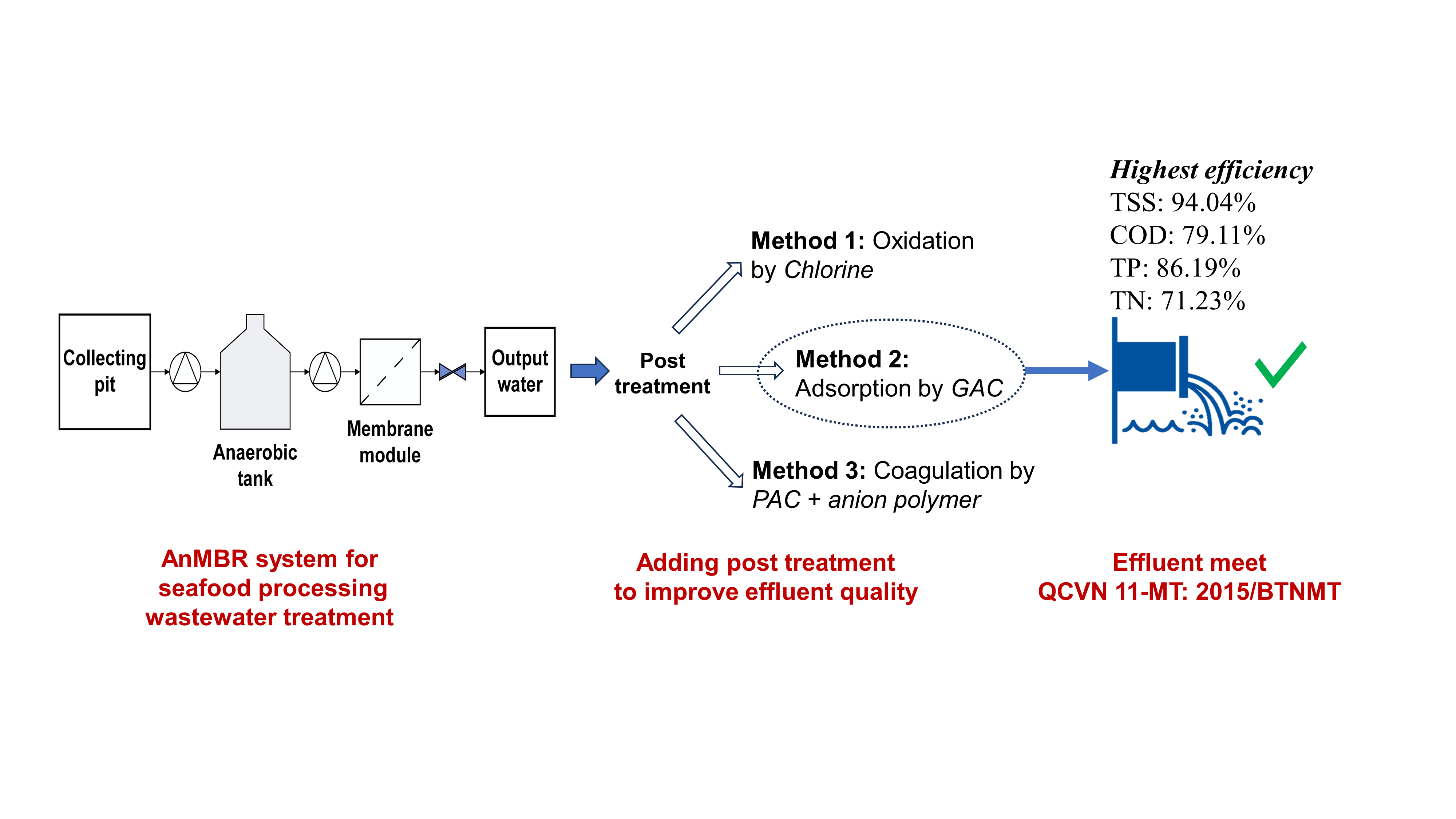
An Anaerobic membrane bioreactor (AnMBR) was applied for treating wastewater of a seafood processing factory in Vietnam. However, Chemical Oxygen Demand (COD), Total Phosphorus (TP), and Total Nitrogen (TN) values of the AnMBR effluent were 250.43 mg/l, 19.96 mg/l, and 62.65 mg/l, respectively, and were about two times higher than the technical regulation for seafood processing wastewater in Vietnam. AnMBR needs to be combined with other post-treatment processes to ensure that treated water can meet the technical regulation. Therefore, current research has tested various advanced post-treatment methods for AnMBR effluent including chlorine, poly aluminum chloride (PAC) combined with anionic polymer, and granular activated carbon (GAC). Different concentrations of the above chemicals and reaction times were tested to select the appropriate post-treatment method. The results showed that chlorine had the lowest treatment efficiency for all four parameters (Total suspended solids – TSS, COD, TP, and TN). GAC was more effective than PAC in treatment of TN and TSS. Besides, GAC with a concentration of 5000 mg/L and a reaction time of 60 minutes brought the highest TSS, COD, TP, and TN treatment efficiency with 94.04, 79.11; 86.19, and 71.23%. This implies that GAC is the suitable method for the post-treatment of AnMBR seafood processing effluent.
Total file downloads: 43